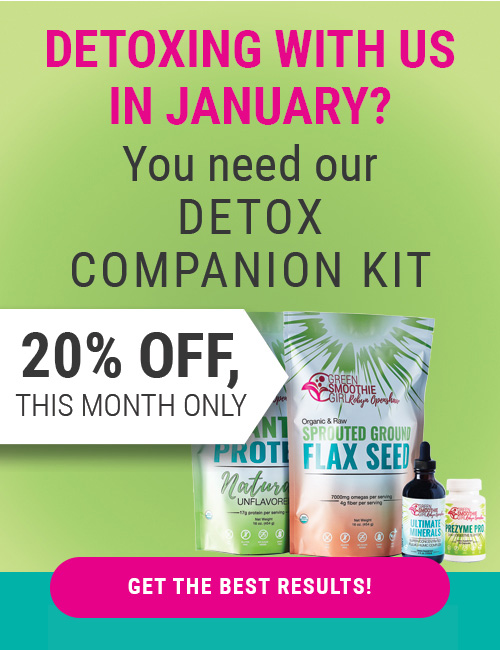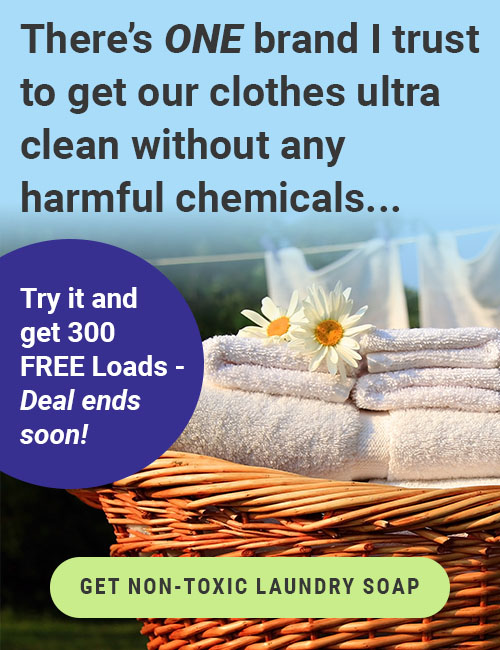Ep.87: Environmental Toxicity with Jill Carnahan

Podcast: Play in new window
Today we are talking about environmental toxicity, the chemicals in the environment that get in the way of you living at the higher vibrations. Dr. Jill Carnahan joins us today to educate us. She was one of the first 100 healthcare practitioners to be certified in functional medicine. She was certified through the Institute of Functional Medicine in 2008 and founded a functional medicine practice with her partner, Dr. Robert Rountree. She is also a 15 year survivor of breast cancer and Crohn’s disease and is really passionate about teaching people how to live well and thrive even when diagnosed with really complex or chronic illnesses.
LINKS:
Grab your free mold guide: Click Here
TRANSCRIPT:
Robyn: Hey everyone, it’s Robyn Openshaw and welcome to VIBE. Today we are talking about environmental toxicity, chemicals in the environment, that get in the way of you living at the higher vibrations. And I’ve invited a friend of mine named Dr. Jill Carnahan to speak to us today.
She’s pretty interesting, because she’s a medical doctor and she did her residency in family medicine in 2006. She was voted by faculty to receive the resident teacher of the year award, and was elected to central Illinois’ 40 leaders under 40. I believe she was at the Methodist Medical Center when she was teacher of the year. She got a medical degree from the school of Medicine in Chicago. She was a bio engineering undergrad. So not too shabby, these academic credentials here; dually board certified, in family medicine and integrative holistic medicine.
Dr. Jill Carnahan was also – and this is very, very exciting – she was one of the first 100 or so healthcare practitioners to be certified in functional medicine. We talk sometimes on the show about how people wanting to practice outside of standard of care, which is, you know, tech, drugs, surgery; kind of modalities are really organizing around this, this principle of functional medicine.
She was certified through the Institute of Functional Medicine in 2008. Dr. Carnahan’s vision for health and healing resulted in the Methodist Center for Integrative Medicine in Peoria, Illinois, where she was medical director. And now, she’s in Boulder, Colorado, and she founded a functional medicine practice with her partner, Dr. Robert Rountree. She’s recently opened a brand new clinic in Louisville, Colorado.
And then we always like to talk on this show, don’t we, about the personal journey of the doctor, the expert, the author. Dr. Carnahan is also a 15 year survivor of breast cancer and Crohn’s disease. And so she is really passionate about teaching people how to live well and thrive, even when diagnosed with really complex or chronic illness.
So she teaches other physicians how to go to that underlying cause of the illness, rather than just treating symptoms; we often criticize modern medicine for just treating symptoms and putting duct tape over the warning light, right? So big writer, speaker, and I’m really excited to welcome Dr. Jill Carnahan to the Vibe show.
Jill: Thank you Robyn. I always love your energy, and love what you’re doing, and I’m so excited to be here with you talking about my favorite topic, environmental toxicity.
Robyn: Why is this becoming such a very hot topic, especially in integrative or functional medicine? Why are we all suffering from toxic exposure?
Jill: So you know what’s sad is, it’s almost like the frog in the hot pot that becomes boiled slowly, slowly. Our environment is so toxic and people just don’t [see it], I know you talk about it like I do and try to bring awareness. But our general population just doesn’t even understand how many different exposures there are.
And that can go from anything from beauty products, to hair and makeup products, to cleaning products in your household, to air fresheners, to where we go to the salon or to get our nails done, or you know, places where there’s chemical exposures there.
And industrial things, like when they’re building homes and office buildings, all of those things tend to have a pretty massive off-gassing of chemicals. And even in our food supply, there’s really very little regulation and getting new chemical products you know, to be able to be used. And so there’s not a lot of regulation.
And because of that, this accumulation in our environment, in our water supply and our food supply in our air, just tends to be this toxic overload. And I always describe the concept of total toxic load as it’s almost like we’re all born with a bucket capacity to detox. And some people, like me, had a very small bucket, so it didn’t take very long or very much for it to be overloaded. But when that water level reaches a top and overflows, it presents with neuro degenerative diseases, Alzheimer’s, Parkinson’s disease, dementia, brain disorders, auto immunity, mood disorders, gut disorders. And a lot of people just come to their doctor with symptoms and they have no idea that toxic load is part of the problem.
Robyn: Well, and probably a lot of their doctors have no idea how to ascertain what their issue is. Right?
Jill: Exactly, exactly. Because there’s not [a lot of tools], like I in my clinic and most functional integrative doctors do have some more tools. I’ll do urine testing, blood testing for mold toxins and environmental chemicals and pesticides, but that’s not common, and that’s actually the exception to the rule.
Robyn: So cancer is part of your past. Crohn’s disease is part of your past. And I did not know until we were chatting, right before we started the show, that you’re the daughter of a farmer. And I think just a few episodes ago, I was telling the audience that the top three professions for getting cancer are farmers, dentists and hairdressers. What do those three have in common? What do you have to say about that?
Jill: I love it, and I think you’re so right on. So they’re all definitely heavy, toxic chemical exposures. Hairdressers have all kinds of formaldehydes and dyes, and things that are very toxic, that they’re working with every day. I would say nail technicians could be in there as well.
And then, dentists, typically, at least in the past, they’ve been working with mercury. I’ve had probably half a dozen dentists that have told me they used to actually – with their fingers, no gloves, no protection – actually handle mercury, and that’s super toxic.
And then farmers, oh my goodness, there is so much. I grew up in a farm in central Illinois as one of five children, the second oldest and oldest girl. And there’s no doubt in my mind that that toxic exposure was part of my getting cancer at the age of 25. As we already know, you know, 25 year old women are not supposed to get breast cancer.
It was, it’s kind of an anomaly. And the only way that an anomaly happens is if there’s massive toxic damage to the DNA.
And I definitely had exposures as a very young girl, walking amongst beans and corn and things like that. And just probably our water supply, in hindsight, could have been contaminated with pesticides in the groundwater. That’s super common. And I grew up with a well, a well on the farm. And so who knows what chemicals could have gotten into that water supply.
And then, interestingly, Atrazine is a known endocrine disruptor. It’s a super toxic chemical, it’s still used in the US on crops. And atrazine is definitely a link to different types of breast and prostate cancer. And if you look at a map of the US at like the levels of Atrazine use, the area where I grew up is like the hottest, brightest red spot in the whole United States.
Robyn: Oh dear. And Atrazine? Is Atrazine an herbicide or pesticide?
Jill: Yeah, it’s an herbicide.
Robyn: I must have a big bucket, luckily, from somebody probably on my dad’s side. My father sprayed in this cherry orchards; they sprayed Malathion growing up.
Jill: Wow.
Robyn: Yeah. And he’s 75 right now and still jogs six miles, six days a week. And I think that, besides the lifestyle factors, the fact that he ate really quite healthy his whole life, and has always been super fit [has kept him alive]. And I don’t know why he’s 75, because he said he swallowed mouthfuls of Malathion. The US banned it a long time ago. I can’t remember. I don’t think it was Malathion, but it was like a cousin of Malathion that “Silent Spring” was written about, remember that movie?
Jill: Yeah. So you know, that’s the interesting thing there is definitely genetics in all of this and I have some genetics, I always say that I have the worst genetics in the world, because I was really very prone. I was the opposite of your dad in the sense that it didn’t take much for me to be toxically overloaded.
Robyn: But you know, it’s like that divine tap on the shoulder. I bet it has a lot to do with you living a very careful and curated and healthy protective lifestyle now. What kinds of things do you do personally?
Jill: Oh, I love that question because I always feel like a geek when I travel. I have an extra suitcase, and I have an air filter and I have a Nutri Bullet for my smoothies. I have, you know, all kinds of things. I have a wearable filter that I wear around my neck in the airplane. I take activated charcoal. I do tons.
And then I eat really, really clean. I use Instacart to deliver Whole Food groceries to my hotel room. I’m kind of a weirdo when it comes to travel and when it comes to, you know, living life. But honestly I feel amazing. And for me, it’s worth taking the steps of making sure I have clean air, clean water, clean food, when I’m traveling or anywhere else.
Robyn: Heck yes, to it’s worth it because feeling good is worth any price. But Instacart? Delivered to your hotel room? What now?
Jill: Yeah. So Instacart will deliver from Whole Foods. I’ve got it down to a science. I’m literally on the plane with my WiFi ordering groceries; I drive in with my Uber and the groceries are there waiting for me with the concierge. So whenever I travel, I order the [clean] things, like typically I’ll take a Nutri Bullet and then I can get fresh spinach and berries and things to make my own smoothies in the room, and that way at least breakfast and lunch, if I can’t find clean food, I’ve got it covered.
Robyn: Oh, my, gosh! You just blew my mind! I think you just changed my whole life right there.
Jill: Yes! I love it!
Robyn: I mean if we’re going to travel a lot, like you and I both do, you got to learn these things.
Jill: Yeah. You have to have it down. And then like I said, I have air filters. I always travel with activated charcoal. And, sometimes I’ll freeze things. Like if I want more of a chicken dinner and I know I can’t get clean organic food for dinners, I’ll actually freeze a chicken dinner and put it in my checked luggage. And by the time I get to the hotel it’s perfectly fine, just barely thawed; it goes in the refrigerator.
And for your listeners, if you need a refrigerator, you just tell them due to medical necessity, you need a fridge or a microwave in your room, and they have to provide it. Due to ADA guidelines. So you just tell him “medical necessity”, that’s the magic word. And you get your fridge.
Robyn: No Way! Okay. That’s two mind blowing things right there.
I, by the way, have locally the “Roxberry” franchises, owned by a friend of mine. And, actually if you live here on the Wasatch Front and you’re listening to this, you don’t have to be friends with them to get delivery. But if it’s the Jackman family who owns the one that is near you, they deliver me six pints of no fruit, just organic greens, cucumbers, celery, turmeric, ginger. They deliver me six pints of it twice a week.
And if they know that I’m traveling, if I text her and say: “Hey, I need some or all, of my six pints frozen,” they’ll deliver me frozen pints, which I can literally just stick in my suitcase. Or I can even take it through TSA because it’s frozen. I mean they always pull it. They’ll always pull it out and look at it and ask me what it is.
Jill: I’ve done that before too, Robyn, and mine’s like the chicken dinner with olive oil and peppers and parsley and they’re like: “What is that?”
It’s dinner. I love it.
Robyn: Yes, these are the things we have to do and they sound hard and they sound like, oh I have to plan ahead and whatever, and you do, but worth it, worth it, worth it.
So you got to 2014, and you hit a new crisis because of environmental toxicity. Let’s talk about mold because I think a lot of people are suffering with mold exposure. It’s getting to be a lot more awareness about it. But you’ve become really pro at helping with mold remediation, and helping people recover after they’ve got these mold spores that are hard to eliminate from the human system. Will you talk about that?
Jill: Sure. So yeah, like you said, I got over cancer. I was very sick afterwards. Got Crohn’s, got over that. Got through medical school and actually was in a great spot: just living well, eating well, cleared up my gut, cleared up my immune system, and doing fantastic.
I moved to Boulder in 2010, and started a practice with Dr. Rountree as you mentioned, and doing great. We moved to a new location in 2012 together and had a great office. And then 2013 came along, and Boulder had a massive, epidemic flood. I don’t know if you remember hearing about that, but you know, the 2000 year flood. And after that flood there was a lot of water damage all over Boulder. And now, even today, many years later, I’m treating so many patients because of that flood event, because their house was damaged, and now there’s mold.
Well, unbeknownst to me, the office of where I was, was flooded in the basement, and mold started growing. And, just like is very typical, about a year later is when I started having symptoms. So there was time for the water to intrude the building, and for mold to grow, and then I started getting sick the following year in 2014.
And what happened for me was I started having immune weakness. So I was really prone to infections, respiratory congestion, skin issues, rashes; my eyes would always be bloodshot and red after I left the office. I started having shortness of breath. So almost like a new onset asthma. And I’d never in my life had trouble breathing before. So lungs were affected, sinuses were affected, my gut was affected, immune system affected.
And I kind of knew in the back of my mind, you know, mold might be a possibility, but you know, I always had such compassion for people who are dealing with a potential for mold because it means that if you find it, you have to move or leave a home, and it can mean pretty dramatic changes.
And just like my patients, I was kind of in denial for several months. And then I finally got like, “Okay, I’m so sick, something has to change.” And I did some urinary test for Mycotoxins, which was positive. I did a blood test to check if my immune system was inflamed due to mold, and it was positive. And then I had an inspector come out and we found Black Stachybotrys, one of the most toxic molds, in our basement, just a few floors directly below my office space.
So the proof was there. And I literally, when I found out about it and had all the evidence, I never set foot in my office again. I literally took the charts, and started over and left everything. I sold all my furniture, got rid of everything, and started basically completely from scratch after that.
Robyn: Oh, that is devastating. First of all, I’m really sorry that that happened to you, and you’re probably trying to deal with that while helping other people who were affected by this big mold outbreak.
Jill: Yeah, it was, it’s crazy. And it’s funny, because you never think it’ll happen to you, and least of all did I. But then, I think I was kind of in a state of shock; I’m a survivor by nature as you already know from my story, but I just kind of was pushing forward. But looking back, I was really sick, and I somehow managed to not miss any patient days. I never had to cancel a single patient. I never told anyone at that time that I was so sick; I was just surviving.
Then overtime I learned what it takes, and that’s why I’m so passionate about teaching others and teaching your listeners about how might you find mold, could you have an issue with it, and how to treat it, because you can get, well, I’m 99 percent better. I do still have to be careful about hotels and places I travel if they have mold, but even if I get exposed, it doesn’t take me long to bounce back now.
Robyn: After you’ve have had a major mold exposure like that, do you think that your immune system is constantly fighting so that you have a more full bucket, to use that metaphor? And I’ve heard others use that metaphor. I didn’t interview her, but she interviewed me: Dr. Amy Myers. I’m sure you know who she is. She’s had the autoimmune struggles, and she refers to a very similar metaphor.
I always ask practitioners this: “Why do they think that some people react so violently to certain environmental stressors, and others don’t?” And I know that you have your own theories about it. And I have my guesses.
The EMF sensitivity; that’s starting to become a much bigger issue that most people don’t know about, but we talk about it a lot on my show. Of how these chaotic frequencies coming off [devices], all these proliferating electronic devices in our energy fields, will completely knock some people over to where they literally can’t [live]; like a rare person just can’t even live in an environment where there’s WiFi and smart meter or whatever. And then other people, and I’ve got to admit I’m one of them, that doesn’t notice, the slightest thing, no matter how much, how many electronics are in the room.
What do you think is going on there? Why is there such a big disparity?
Jill: Oh, I love this question. Number one is there is a genetic component, so just like I have poor detox genetically and your father has amazing detox genetics. Some people are more prone to get toxic from Biotoxins, we call them, so Biotoxins meaning from living sources.
This could be from blue green algae, it could be from certain types of fish and singula terra in the fishes. It could be from a mold in the environment. It could be from tick borne illnesses, like Borrelia or Bartonella or Babesia.
So all of these Biotoxins can create basically inflammation in the system, and those who are genetically susceptible, which is about a quarter of the population, have trouble clearing the toxins from their body. So it creates this vicious cycle where the body is trying to rid itself of this toxin, and instead it actually attacks itself and causes collateral damage. So it’s this really vicious cycle that happens in someone who’s susceptible.
Now I have a theory about the EMF too, and I love that you mentioned that because I’m one of the other people out here who is really passionate about that as a toxic exposure. And there’s not a lot of docs who are.
Dr Klinghardt, who’s very famous in the Lyme world. He’s a German medical doctor who’s quite brilliant in the area of Biotoxins and infectious diseases. He did a study with mold in petri dishes where he put one mold dish under a regular household router, which creates EMF, and another one that was shielded by aluminum. And the dish that was not shielded under the router produced 600 times the mycotoxins as the shielded mold.
So what we know is, say, someone’s exposed to mold, and they’re colonized in their sinus or their gut or their lungs – that’s one group of people that are going to be extremely sensitive to EMF because basically, if they have mold or mycotoxins in their body, those organisms still sense the EMF as a threat. And they produce a lot of toxins and that can cause illness in the person because of that exposure.
Robyn: Yeah. I’m just collecting theories, and I think that the more things we have in our bucket and including, you know, if we’ve got Lyme and we’ve got these antigens that were always fighting, then something that would be minor to somebody else, is the thing – the pinky push that tips us over maybe. Right?
Jill: Exactly.
Robyn: Yeah. Your theory is similar to my little collection of theories that I’m collecting from people who deal with this a lot.
So what else are you seeing out there besides mold?
Maybe talk for a minute about – you ran through all of your symptoms – but is there anything you want to tell somebody before we move on from mold about remediation versus just moving out? I mean, people can’t always do that. Like if you own your home, and you’re strapped for cash, you’re not just going to walk away and move out of your house. But any thoughts about that as you’ve watched people struggle through this?
Jill: So first thing is, often what I’m asking is: When did you get sick? Second is then: What happened around that time?
Because very frequently there’ll be a change in environment, a move that instigated an illness, and especially if in the whole family (as some people are affected in different ways) but if there’s multiple people in the same household, or multiple workers in the same environment, that’s a dead giveaway that there’s some environmental toxic causing issues.
If you have musty smells, that’s VOC’s for mold. So you want to check out anything that has musty smells, of course: any known water damage, anything like that. And typical symptoms: of course I mentioned mine, but super common is fatigue and weakness and poor memory and word finding. Brain fog is incredibly common, morning stiffness, joint pain, numbness, tingling, skin sensations, gut can be affected. So, appetite changes, weight loss, weight gain, diarrhea, constipation, heartburn.
The eyes and the mucous membranes are affected. So red eyes, blurry vision, abdominal pain I mentioned. Static shocks is kind of a unique one, because mold can affect the antidiuretic hormone that regulate salt water balance in the body, and if someone has mold exposure, they have, more likely, sweaty salty skin, and they actually create a battery on their skin, a gradient; so if they touch a doorknob or something, they’re more likely to have static shocks. And then lightheaded, dizziness, vertigo are common as well.
So those are some of the ways to know.
And then really, the basic thing is if you just throw bleach on the mold, or you don’t take away the materials that got water damaged, actually cut them out with a professional that creates a negative barrier, so you don’t get mold spores all over the house. That’s the best way to do it.
If someone’s super sensitive, they need to leave during the remediation. And porous materials, like books and paper, sometimes clothing or rugs or things, those may have to be discarded because it’s very difficult to clean books. I had to get rid of my whole medical library from, you know, graduating from medical school on when that happened to me, just because the books were so toxic.
Robyn: Oh, sad.
Jill: Yeah. Oh well.
Robyn: So, moving on from mold, you have to take a more extensive patient history than your average medical doctor would who’s looking for treating symptoms. What are like, maybe, the second highest source of toxicity that you treat? You kind of have to ask questions and you find out. But would it be heavy metals? What are you most worried about as an environmental medicine practitioner?
Jill: I just want to mention air quality, because 80 percent of our environmental exposure is through the air and we forget that. We think of food and water and all that, which is super important. And before I knew the statistics, air was something I didn’t really think about, except for mold, but there’s all kinds of formaldehyde fumes, exhaust and things in the air. And so air filters are pretty important in your home and workplace. And I always recommend people get a good air filter. HEPA filter with a VOC filter. And that’s one of the big things people don’t think about.
Other exposures. Food is huge. So just like you and I are so particular about our food, making sure organic, pesticide free, non GMO and glyphosate free food is absolutely essential. And we can talk about chemical exposures in the dentist, like mercury amalgams or hair dyes or chemicals. But every single day we put food in our mouth, so probably a bigger risk is actually the food that we choose to eat.
So air quality, food, and then right after that would be like chemicals, pesticides, Mercury, heavy metals, lead. Those are all common as well. And I probably see more air types of VOC’s than I do of mercury or lead, which is kind of surprising.
Robyn: Well, it’s always inspiring to hear what someone is doing, who came into life with some challenges you had absolutely no control over. Obviously, you are a total rock star being this integrative physician. You’re doing great work in Colorado. Thank you for your great work.
Tell everyone where they can learn more about you and read more of your content. I was doing some research on herxheimer reactions. We just published a blog post today about herxing, and I came across your fantastic content when I was researching. So yeah, tell everybody where they can learn more. I know you have a big audience on mold remediation and recovering from mold exposure.
Jill: Yeah, you bet. Thank you. And you can just go to my website, which is my name, Jill Carnahan. https://www.jillcarnahan.com/ And please sign up for my newsletter because I have great free content every few weeks, all free of charge. And then if you want the free mold guide, it’s free as well. Probably the easiest way is just to google Dr. Jill Free Mold Guide and it’ll come up right at the top and you can download that free guide.
Robyn: Okay. Well you’ve been a wealth of knowledge. I’m sorry for everything that you’ve been through, but I’m so thankful that you’ve like turned those lemons into lemonade and not only being healthy yourself, but also sharing so much with others. So thank you so much. Dr. Jill Carnahan.
Jill: You’re welcome. Thank you for having me, Robyn.













